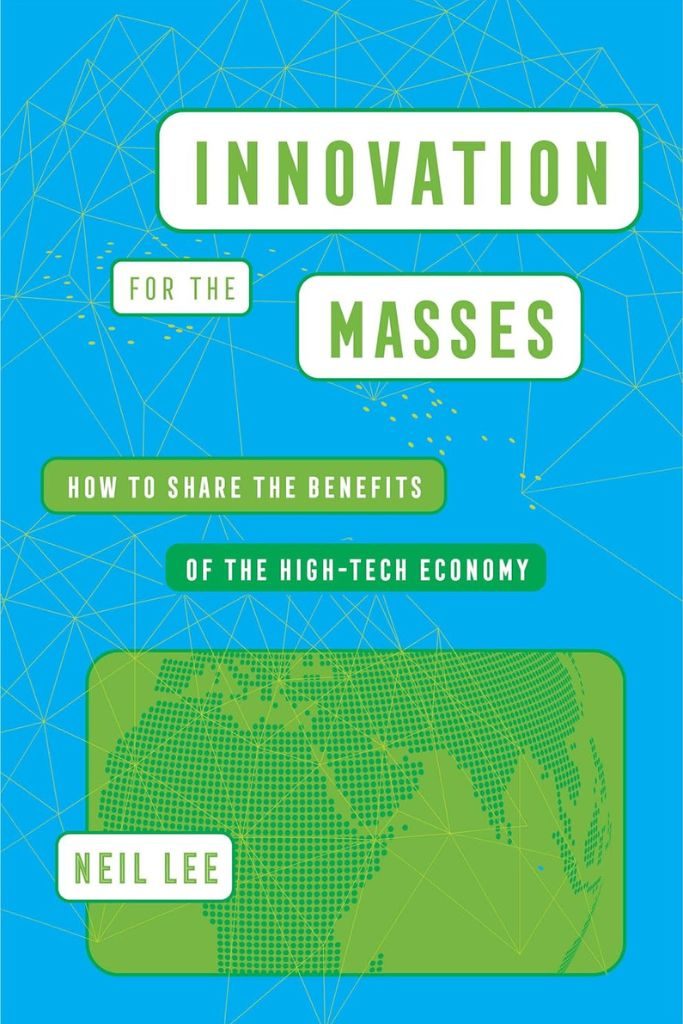 In Innovation for the Masses: How to Share the Benefits of the High-Tech Economy, Neil Lee proposes abandoning the Silicon Valley-style innovation hub, which concentrates its wealth, for alternative, more equitable models. Emphasising the role of the state and the need for adaptive approaches, Lee makes a nuanced and convincing case for reimagining how we “do” innovation to benefit the masses, writes Yulu Pi.
In Innovation for the Masses: How to Share the Benefits of the High-Tech Economy, Neil Lee proposes abandoning the Silicon Valley-style innovation hub, which concentrates its wealth, for alternative, more equitable models. Emphasising the role of the state and the need for adaptive approaches, Lee makes a nuanced and convincing case for reimagining how we “do” innovation to benefit the masses, writes Yulu Pi.
Professor Neil Lee will be speaking at an LSE panel event, How can we tackle inequalities through British public policy? on Tuesday 5 March at 6.30pm. Find details on how to attend here.
 While everyone is talking about AI innovations, Innovation for the Masses: How to Share the Benefits of the High-Tech Economy arrives as a timely and critical examination of innovation itself. Challenging the conventional view of Silicon Valley as the paradigm for innovation, the book seeks answers on how the benefits of innovations can be broadly shared across society.
While everyone is talking about AI innovations, Innovation for the Masses: How to Share the Benefits of the High-Tech Economy arrives as a timely and critical examination of innovation itself. Challenging the conventional view of Silicon Valley as the paradigm for innovation, the book seeks answers on how the benefits of innovations can be broadly shared across society.
When we talk about innovation, we often picture genius scientists from prestigious universities or tech giants creating radical technologies in million-dollar labs. But in his book, Neil Lee, Professor of Economic Geography at The London School of Economics and Political Science, tells us there is more to it. He suggests that our obsession with cutting-edge innovations and idolisation of superstar hubs like Silicon Valley and Oxbridge hinders better ways to link innovation with shared prosperity.
Lee stresses that innovation doesn’t make a difference if it stays locked up in labs; it needs to be shared, learned, improved and used to make real impacts.
Innovation goes beyond the invention of disruptive new technologies. It also involves improving existing technologies or merging them to generate new innovations. In this book, Lee illustrates this idea using mobile payment technologies as an example, showcasing how the combination of existing technologies – mobile phone and payment terminals – can spawn new innovations. He argues that “technologies evolve through incremental innovations in regular and occasionally larger leaps” (23). Moreover, Lee stresses that innovation doesn’t make a difference if it stays locked up in labs; it needs to be shared, learned, improved and used to make real impacts. It is important to think beyond the notion of a single radical invention and recognise the contributions not only of major inventors but of “tweakers” who make incremental improvements and implementers who operate and maintain innovative products (25).
In challenging the conventional narratives of innovation, this book guides us to expand our understanding of innovation and paves the way for a discussion on combining innovation with equity. When we pose the question “How do we foster innovations?”, we miss out on asking a crucial follow-up: “How do we foster innovations that translate into increased living standards for everyone?”. Lee argues that the incomplete line of questioning inevitably steers us towards flawed solutions – countries all over the world building their own Silicon-something.
While the San Francisco Bay Area is home to many successful start-up founders who have made billions, it simultaneously struggles with issues like severe homelessness.
While the San Francisco Bay Area is home to many successful start-up founders who have made billions, it simultaneously struggles with issues like severe homelessness. The staggering wealth gap is evident, with the top 1 per cent of households holding 48 times more wealth than the bottom 50 per cent. Other centres of innovation like Oxbridge and Shanghai are also highly unequal, with the benefits of innovations going to a small few.
The book introduces four alternative models of innovation – Switzerland, Sweden, Austria and Taiwan – that suggest innovation doesn’t inevitably coincide with high-level inequality.
The book introduces four alternative models of innovation – Switzerland, Sweden, Austria and Taiwan – that suggest innovation doesn’t inevitably coincide with high-level inequality. Through these examples, Lee highlights the significance of often-neglected aspects of innovation: adoption, diffusion and incremental improvements. Take Austria, for instance, which might not immediately come to mind as a global hub of disruptive innovation. Its strategic commitment to continuous innovation – particularly in its traditional, industrial sectors like steel and paper – sheds light on the more nuanced, yet equally impactful, facets of innovation. (92) Taiwan, on the other hand, gained its growth from technological development facilitated by its advanced research institutions such as the Industrial Technology Research Institute and state-led industrial policy. Foxconn stands as the world’s fourth-largest technology company, while the Taiwan Semiconductor Manufacturing Company (TSMC) accounts for half of the world’s chip production (116).
In all four examples, the state played a critical role in creating frameworks to ensure that benefits are broadly shared, showing that policies on innovation and mutual prosperity reinforce each other.
Building on these examples, the book highlights the vital role of the state in both spurring innovations and distributing the benefits of innovation. In all four examples, the state played a critical role in creating frameworks to ensure that benefits are broadly shared, showing that policies on innovation and mutual prosperity reinforce each other. Taking another look at Austria, ranked 17th in the World Intellectual Property Organization (WIPO)’s Global Innovation Index (99), its strength on innovation is accompanied by the state’s heavy investment on welfare to build a strong social safety net.
As the book draws to a close, it advocates for the development of a set of specific institutions. The first type, generative institutions, foster the development of radical innovations. These are heavily funded in the US, resulting, as British economist David Soskice claims, in the US dominance in cutting-edge technologies (169). The book shows a wide array of generative institutions through its four examples. For instance, in Taiwan, research laboratories play a crucial role in the success of its cutting-edge chip manufacturing, while the government directs financial resources towards facilitating job creation. On the other hand, Austria has concentrated its fast-growing R&D spending on the upgrading and specialisation of its low-tech industries of the past.
The second and third types, diffusive and redistributive institutions, aim to address issues of inequality, such as labour market polarisation and wealth concentration that might come with innovation. These two types of institutions offer people the opportunity to participate in the delivery, adoption and improvement of innovation. Switzerland’s mature vocational education system is a prime example of such institutions, “facilitating innovation and the diffusion of technology from elsewhere and ensuring that workers benefit.” (172)
Discussions about ‘good inequality’ where innovators are rewarded, and “bad inequality,” where wealth becomes too concentrated demonstrate the book’s strong willingness to call out inequality and tackle complex issues head-on.
Discussions about “good inequality” where innovators are rewarded, and “bad inequality,” where wealth becomes too concentrated demonstrate the book’s strong willingness to call out inequality and tackle complex issues head-on. (8) This integrity extends to Lee’s candid examination of the examples. Despite presenting them as models of how innovation can be paired with equity, he does not gloss over their imperfections. By recognising the persistent disparities in gender, race, and immigration status in all four of these examples, the book presents a balanced narrative that urges readers to think critically. Although these countries have made strides in sharing the benefits of innovation, they are far from perfect and still have a significant journey ahead to reduce these disparities. Take Switzerland, for example. Though it consistently tops the WIPO’s Global Innovation Index, maintaining its position for the 13th consecutive year in 2023, it grapples with one of the largest gender pay gaps in Europe. This gender inequality has deep roots, as it wasn’t until 1971 that women gained the right to vote in Swiss federal elections (71).
Lee warns against the naive replication of these success stories elsewhere without adapting them to the specific context. This frank and thorough approach enriches the conversation about innovation and inequality, making it a compelling and credible contribution to the discourse and a convincing argument for changing what we consider to be the purpose of innovation.
- This review first appeared at LSE Review of Books.
- Image Credit: vic josh on Shutterstock.
- Please read our comments policy before commenting.
- Note: This article gives the views of the reviewer, and not the position of USAPP – American Politics and Policy, nor of the London School of Economics.
- Shortened URL for this post: https://wp.me/p3I2YF-dHA






